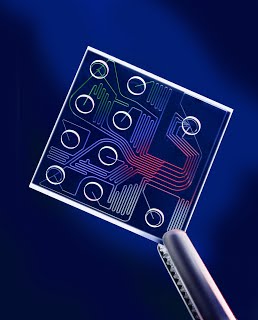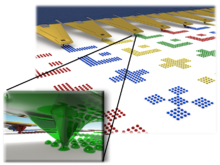Nano (bio-sensing) chips (Nano bio Sensing chip), structure, function and applications
Researcher and author: Dr. ( Afshin Rashid)
Note: Nano_Micro bio Sensing chips are a group of electrochemical sensors that work with or without enzymes, a nano_micro sensor capable of measuring not only pH and temperature but also molecules related to metabolism. There is. , which means that the nano-micro sensor can react to a wide range of compounds.
Nano (bio-sensing) chips (Nano- Micro bio Sensing chip) creates nano-bio sensor chips that detect many molecules inside the body. Nano_Micro bio Sensing chips are a type of miniature laboratory that consists of a set of microarrays. These microparticles act as experimental sites within the biochip, and since many of them can be fabricated within the biochip, as a multifunctional electronic nanosensor, many experiments are possible simultaneously. This naturally results in much higher testing speed and efficiency than if each test were performed individually using other methods.
Nano (bio-sensing) chips (Nano_Micro bio Sensing chip) one centimeter square contains three main components: a circuit with six nano-sensors, a control unit that analyzes incoming signals. Nano_Micro bio Sensing chips , especially functional microarrays, is used to study basic biological properties such as investigating the interaction of cells or other molecules.
Nano (bio-sensing) chips (Nano_ Micro bio Sensing chip) are able to perform various types of chemical and cellular analysis, isolation and reaction. Nano (bio-sensing) chips (Nano_ Micro bio Sensing chip) is one of the fastest growing areas of micro-fabrication and the development of nano technology and many technologies to develop applications in a wide range of fields including analysis And detection in cells is done by nanoparticles.
Conclusion :
Nano_Micro bio Sensing chips are a group of electrochemical sensors working with or without enzymes, nano_micro sensors that are able to measure not only pH and temperature, but also molecules related to metabolism. . , which means that the nano-micro sensor can react to a wide range of compounds.
Researcher and author: Dr. ( Afshin Rashid)
Specialized doctorate in nano-microelectronics





